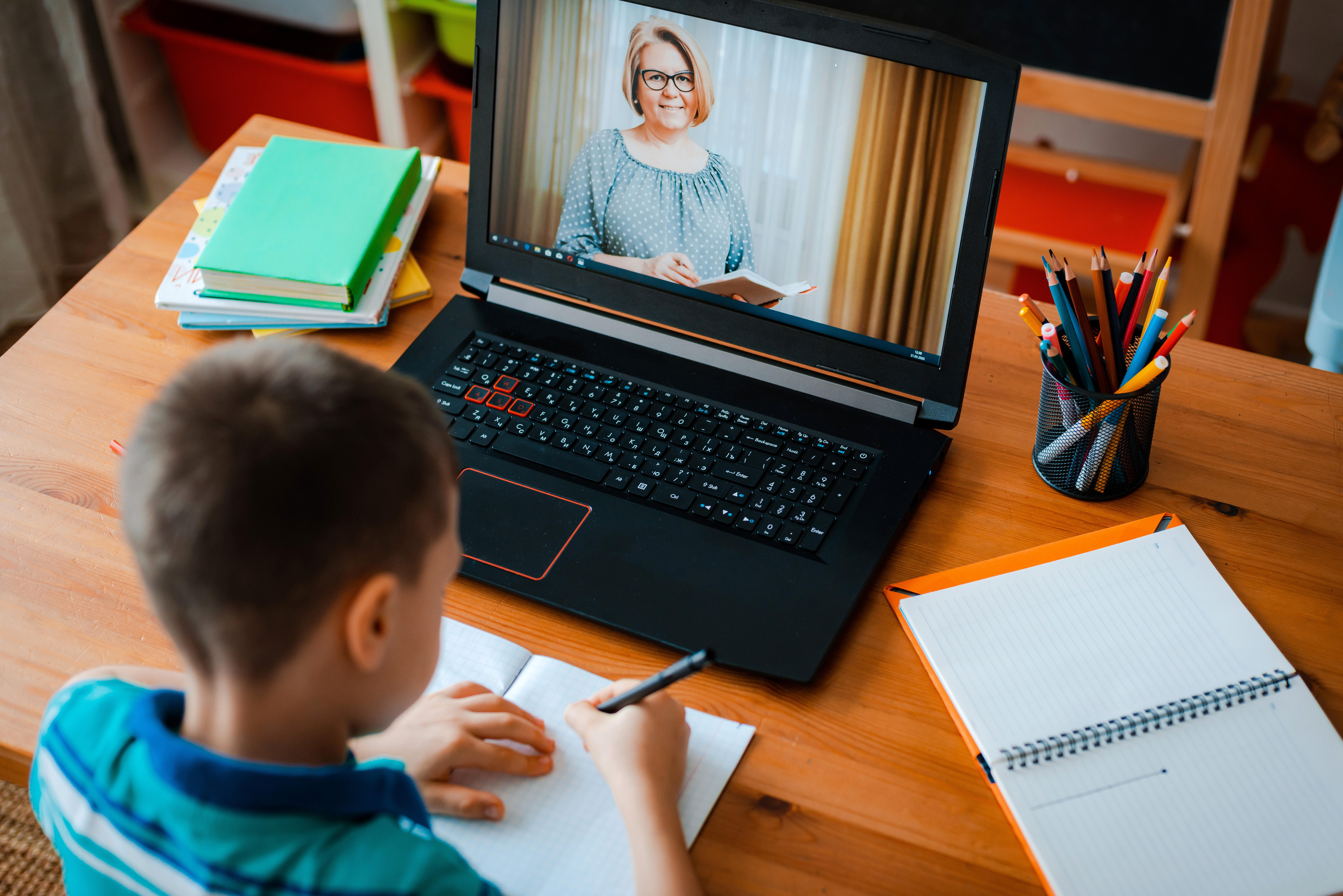The headline was eye-catching: “Principals losing their minds as pressures mount for schools to close”. The media had identified that many of Victoria’s schools had been experiencing short term closures following COVID-19 infections of staff or students and now the Victorian Government has mandated that all Victorian schools shut down for six weeks. But have the principals really been ‘losing their minds’? Should all schools in all states and territories ensure that policies and programs for online learning are ready to be rolled out again at short notice?
According to this media report, more than 50 Victorian schools had closed for deep cleaning across the state due to positive COVID-19 cases (prior to the lockdown over the past few days), causing teachers and principals immense "anxiety". However, were school principals really that stressed that they did not know the best way to proceed? I doubt that very much. Principals know what is best for their students. Perhaps they have been being stymied by government protocol?
Principals and school governing bodies that have infection control policies and business continuity plans know that they will be able to face the risk of short term or long term infection-related closure because they have planned to do so if it is necessary. They will always place the safety of their students and staff at the forefront of their thinking.
So, although the article implies that schools need commonality of guidance from Victorian government departments regarding whether or not they should have closed their facilities to their Year 11 and 12 students for a longer period of time, the principals, although anxious, would not have been as panicked as the headline would like us to believe.
According to The Age, the principal of Catholic Regional College Sydenham shut the school’s doors after seven teachers and multiple students had tested positive. Principal Brendan Watson said that there was no educational benefit for students in pulling them out of class and disrupting their learning each time a member of the school community tested positive. He said students could receive a good education online this year. "We need to give them some consistency and they need to know that they’re going to get through this year," he said. "This stop-start and the unknown, it’s not fair."
Channel 7 News reported that Caroline Chisholm Catholic College was also closed for a clean after a positive case at the school, however, the principal was keeping it closed for an extra two weeks to give students more certainty. So, although principals are not ‘losing their minds’, there is no doubt that principals, students and teachers have become increasingly stressed due to the interruptions to this school year.
Health and Safety Law Requirements for Infection Control
In an earlier School Governance article this year we noted that all workplaces have a duty under health and safety laws to maintain a safe working environment and to prevent harm to workers and any other persons that may be impacted by the school’s operations.
In that article, we identified the hazard as the transmission of COVID-19 in the school, and the enterprise-level risk was described as: “Failure to take all steps that are reasonably practicable to reduce COVID-19 infection transmission in the school community.” In addition, we offered a step by step guide of how to assess this risk and implement the control measures that should be put in place using the “hierarchy of controls” method.
It is very clear that schools are doing everything in their power to ensure that infection control and the safety of their students and staff is one of their highest priorities. Closing schools, having them deep cleaned, increased cleaning regimes, temperature testing and a variety of other controls are evidence of this.
Schools that have developed a hierarchy of controls, based on the national health and safety laws, have been far better prepared to ride out this current wave of infection. The issue is, will we learn from what has happened in Victoria and can schools continue to open and close every time there are new infections if the situation escalates in other states or territories?
Business Continuity Requirements
We can articulate the business continuity risk as: “Failure to implement and maintain a business continuity plan appropriate to the both the size, nature and level of complexity of the school and of the interruption to continuity.”
Schools have plenty of Business Continuity Plans (BCP) in place to care for their students – such as evacuation plans, safer zones and so forth. However, prior to the wide scale closures earlier this year, many schools had previously failed to plan adequately for the possibility of a total closure of the school-a complete loss of business continuity-even if only for a week or two.
In February 2020, School Governance noted that a BCP should minimise the financial, legal, reputational and other consequences arising from the disruption.
A robust BCP must address foreseeable risks which could disrupt the school’s operations, and:
- ensure the continuity of services to the students
- ensure the continued provision of a safe working environment for the students, staff and visitors
- ensure clear communication to staff, students, and parents/carers.
Schools that have developed their BCP and have allowed it to be adapted as this situation has changed, are certainly in a better position than schools that still do not have a BCP.
Schools always strive to provide a safe working environment for their staff, students and parents and, with a valid BCP, they will be able to continue the provision of services to their students, albeit in an online environment.
Issues for Students – Is Online Education a Better Alternative than ‘Stop-Start’ Education?
The ABC News, in late May, reported on the stress experienced by students as a result of the COVID-19 pandemic. Some of the stressors for students included disruptions to study including changes to assessments and study patterns and a lack of daily school structures and routines. There is no doubt that principals and teachers in Victorian schools have been seeing these stresses in their students on a daily basis at ‘the coalface’.
School Governance also commented on the impact of the COVID-19 pandemic on the nation’s 180,000 Year 12 students. Within this article, it was noted that many Year 12 students struggled with online learning and the inability to engage in face-to-face social discourse, camaraderie, examination uncertainty and being behind in coursework due to remote learning issues.
However, what we had been seeing in Victoria was schools that opened for one or two weeks, then closed for a week or two due to new infections. The students briefly gained the benefit of the face-to-face teaching and learning but then had to return to online learning with little or no notice. Not only would this have been an immense workload for the teachers, I would argue that it would have caused these senior students further stress.
In The Age, principal Brendan Watson noted that anxiety among students at his school had grown after some were infected. "It’s dawned on them finally that this is real and sometimes teenagers don't necessarily think that it’s going to hit them but when it does hit their friends they realise it can occur to them as well," he said.
Summary
Are principals really ‘losing their minds’ in relation to the ongoing COVID-19 issue in Victoria? I doubt that. Yes, they may be stressed and yes, they and their staff may be anxious. However, they have been caring for their students and staff to the best of their ability and have continued to educate their students in what has been often very trying circumstances. The total closure of all Victorian schools for the next six weeks may at least alleviate some of the stresses of students, staff and school executives.
Further, what seems to be have become more apparent to principals from around the country who have watched and learnt from the ‘stop-start’ situation faced by their Victorian colleagues is that, if there is another wave of COVID-19 in their state or territory, the option of an extended online learning environment that most schools are now adept at delivering may be the ‘lesser of the two evils’.



